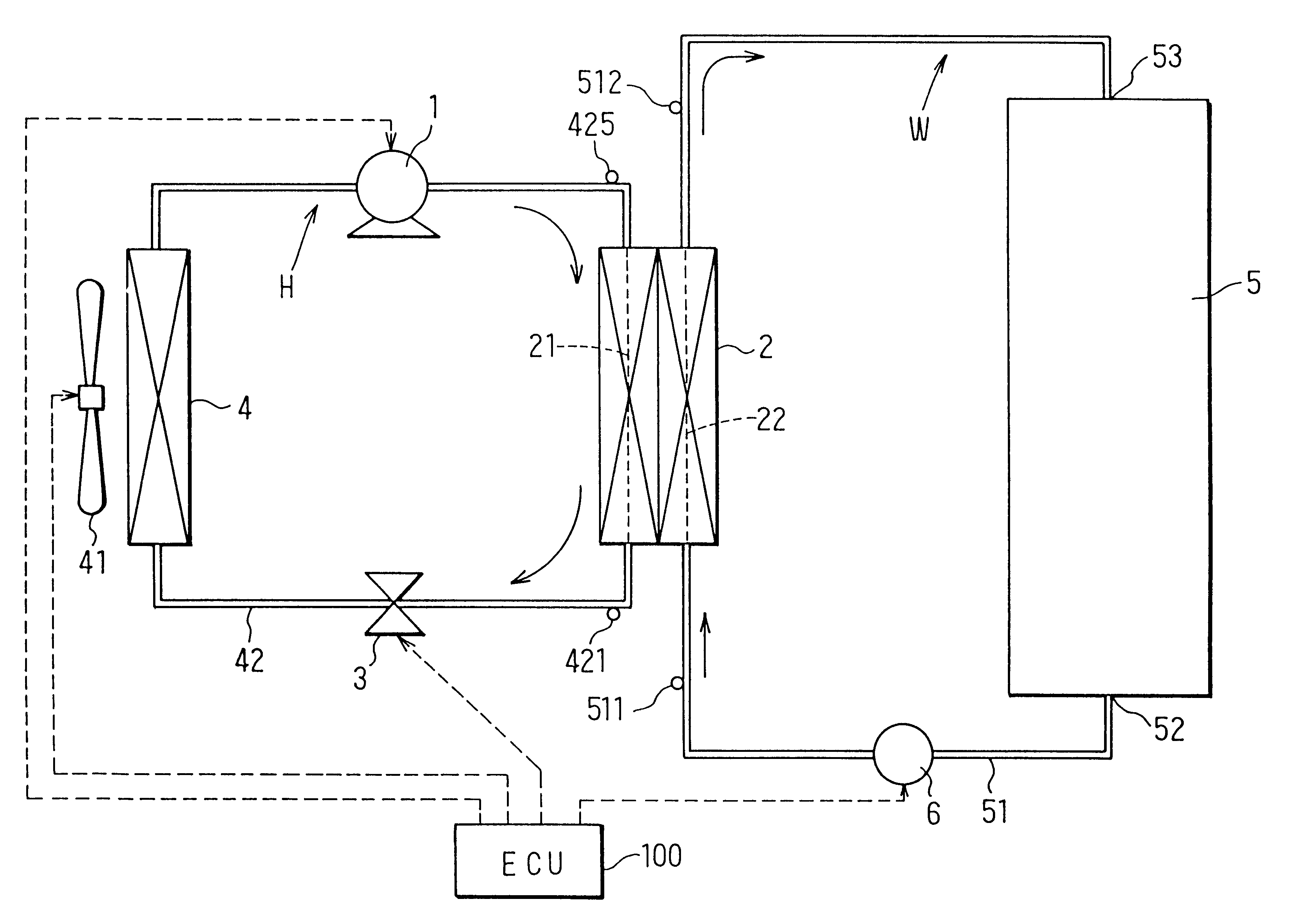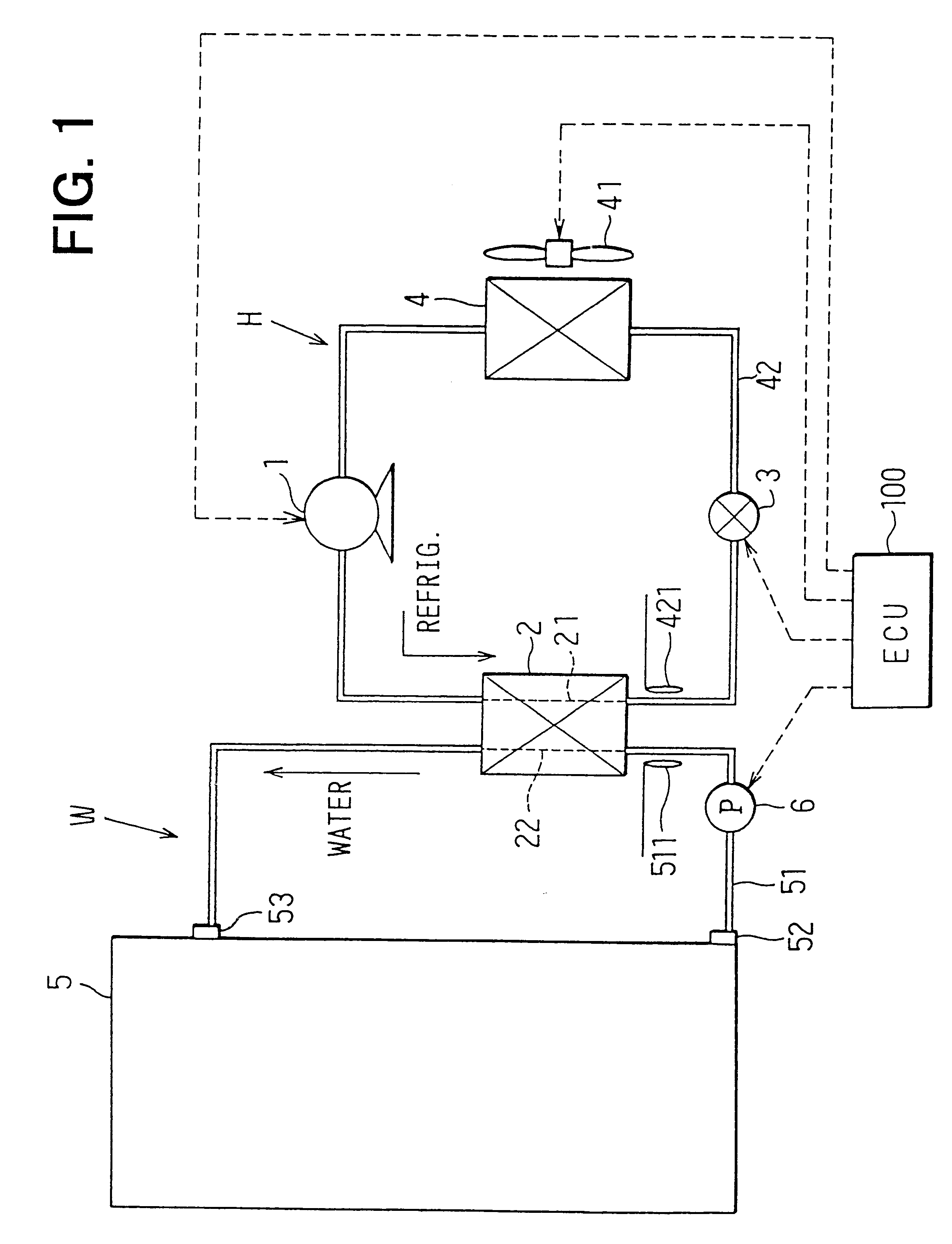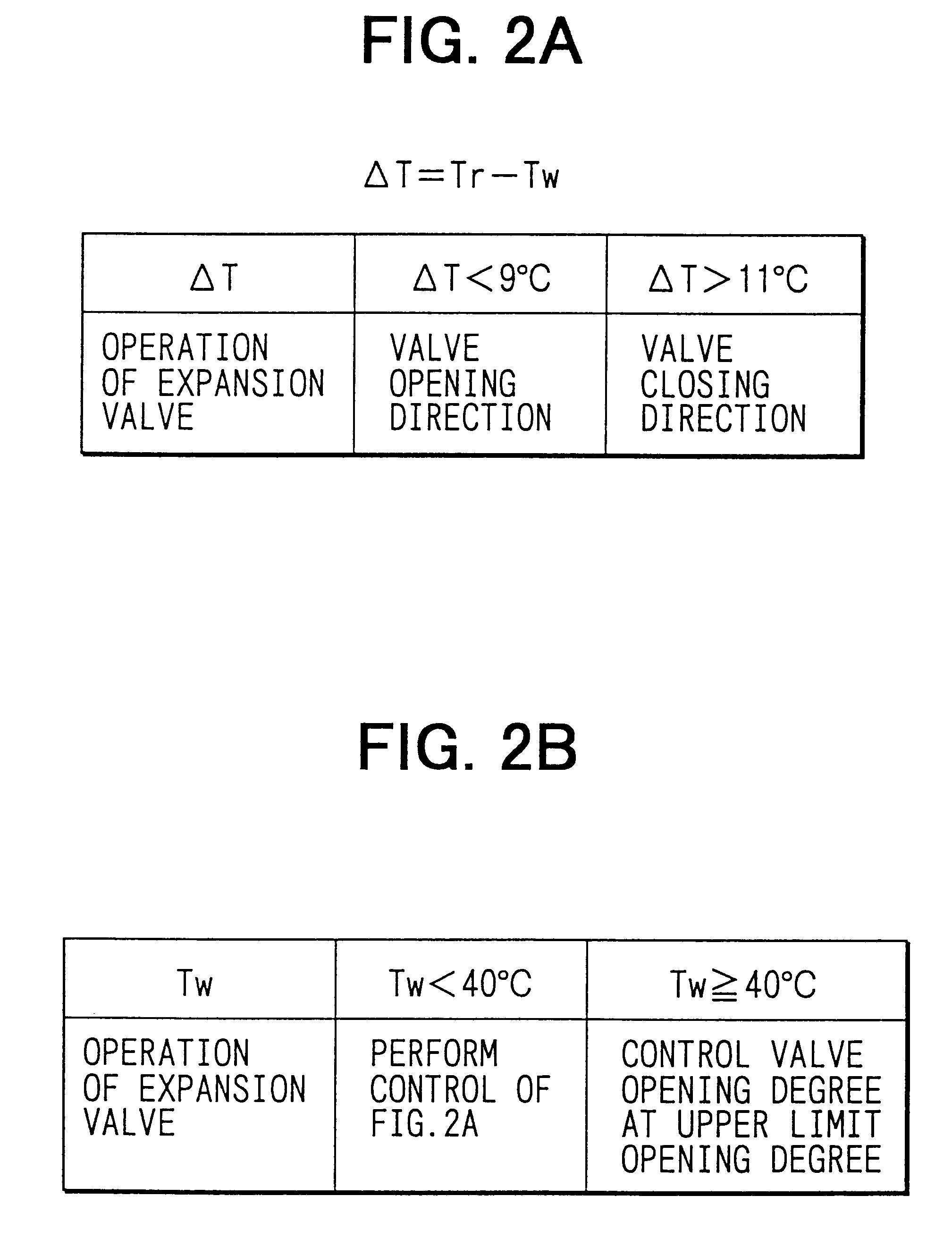Hot-water supply system with heat pump cycle
a technology of hot water supply system and heat pump cycle, which is applied in the direction of heating types, instruments, domestic cooling apparatus, etc., can solve the problem of difficult control of the expansion valve due to the temperature differen
- Summary
- Abstract
- Description
- Claims
- Application Information
AI Technical Summary
Benefits of technology
Problems solved by technology
Method used
Image
Examples
first embodiment
That is, the temperature difference .DELTA.T is a difference between the refrigerant outlet temperature Tr detected by the refrigerant temperature sensor 421 and the water temperature Tw detected by the water temperature sensor 511 (.DELTA.T=Tr-Tw). In the first embodiment, when the water temperature Tw is lower than a predetermined temperature (e.g., 40.degree. C.), the valve opening degree of the expansion valve 3 is controlled in accordance with whether or not this temperature difference .DELTA.T is within a target temperature difference range (for example, 9.degree. C.-11.degree. C.). Specifically, when the temperature difference .DELTA.T is smaller than 9.degree. C., the expansion valve 3 is operated in a direction that opens the valve. On the other hand, when the temperature difference is larger than 11.degree. C., the expansion valve 3 is operated in a direction that closes the valve. The target temperature difference range can be made constant, and may be set to be changed o...
second embodiment
In the second embodiment, after the water temperature Tw' becomes the target water temperature To, the rotation speed of the compressor 1 can be controlled in accordance with the reference pattern in FIG. 5B. In this case, the coefficient of performance (COP) in the heat pump cycle H can be further improved.
In the second embodiment, the increasing ratio in the rotation speed of the compressor 1 is set in accordance with the temperature difference (To-Tw') between the target hot-water supply temperature To and the actual hot-water supply temperature Tw'. However, the opening degree of the expansion valve 3 may be F / B controlled in accordance with the temperature difference (To-Tw'). In this case, if the target hot-water supply temperature To>the actual hot-water supply temperature Tw', the expansion valve 3 is driven in the direction reducing the opening degree. On the other hand, when the target hot-water supply temperature To
third embodiment
Thus, in the third embodiment, when a temperature difference (Tr'-Tam) between a refrigerant temperature detected by the refrigerant inlet temperature sensor 422 and the outside air temperature Tam detected by the outside air temperature sensor 423 is equal to or higher than 0.degree. C. [i.e., (Tr'-Tam).gtoreq.0.degree. C.] as shown in FIG. 8, as the temperature difference (Tr'-Tam) increases, the increasing ratio in the rotation speed of the compressor 1 is increased by the control unit 100. Further, in order to prevent heat from being radiated from the refrigerant in the air heat exchanger 4, the operation of the outdoor fan 41 attached onto the air heat exchanger 4 is stopped when (Tr'-Tam).gtoreq.0.degree. C. Thereby, the cycle high pressure can be maintained in the heat pump cycle. Accordingly, it is possible to secure the hot-water supply ability, to maintain the hot-water supply temperature at the target hot-water supply temperature, and to prevent heat radiation loss in the...
PUM
 Login to View More
Login to View More Abstract
Description
Claims
Application Information
 Login to View More
Login to View More - R&D
- Intellectual Property
- Life Sciences
- Materials
- Tech Scout
- Unparalleled Data Quality
- Higher Quality Content
- 60% Fewer Hallucinations
Browse by: Latest US Patents, China's latest patents, Technical Efficacy Thesaurus, Application Domain, Technology Topic, Popular Technical Reports.
© 2025 PatSnap. All rights reserved.Legal|Privacy policy|Modern Slavery Act Transparency Statement|Sitemap|About US| Contact US: help@patsnap.com



